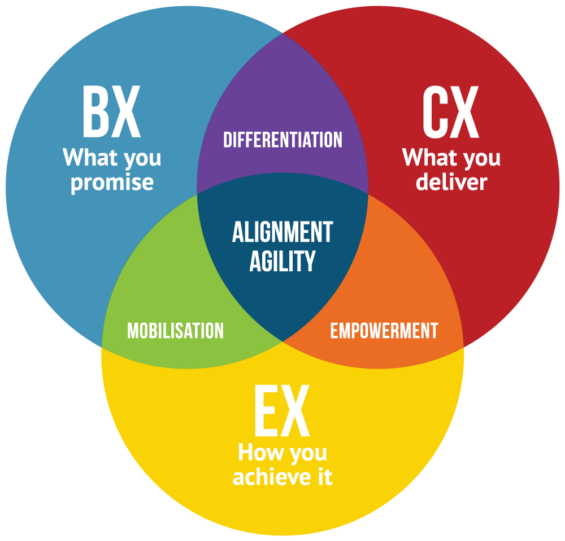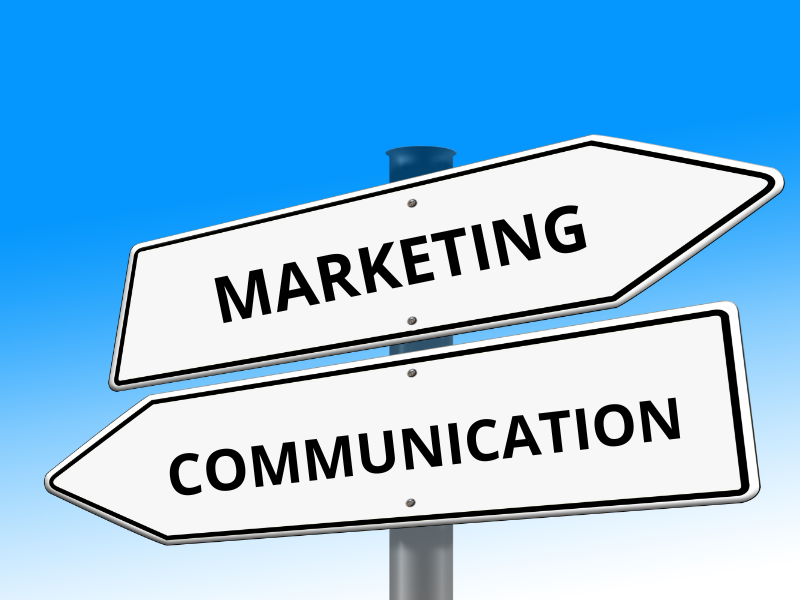3 Keys to an Aligned and Agile Company

In a world where everything is in flux—shifting customer expectations, evolving industries, and relentless competition—your company must adapt or risk being left behind. Enter the concepts of alignment and agility. But what do these terms mean for YOU and your business?
Alignment is perfect harmony. It synchronizes your brand promise, customer experience and employee experience, creating a consistency that builds customer trust and consolidates your reputation. Effective alignment forms the basis of these three dimensions, enabling agility to emerge.
Agility, on the other hand, is the ability to adapt quickly, thanks to alignment. It enables us to pivot, innovate and seize new opportunities. But beware—agility without alignment leads to chaos: a company without a clear course that lets its team navigate blindly!
At Maïeutyk, we break this dynamic down into three interconnected spheres: brand experience (BX), customer experience (CX) and employee experience (EX). Mastering the balance between alignment and agility in these areas distinguishes successful companies from those struggling to keep pace. So, how can you achieve this balance? Let’s dive in!

1. BX: What you promise
Brand Experience (BX) is the heart of your identity. It reflects your vision, values, and commitments to customers and employees. Alignment ensures that your actions mirror your promises, turning your word into a genuine commitment. But agility plays a critical role, too—it’s about adapting your message and positioning to resonate with the market while staying true to your essence. Can you evolve while maintaining your credibility?
2. CX: What your customers experience
Customer Experience (CX) is where the truth lies. It goes beyond what you say and extends to how your customers feel during every interaction with your brand. Alignment guarantees a smooth, consistent experience. Meanwhile, agility keeps you from getting bogged down in outdated practices. As Caroline Ménard beautifully puts it in her article “L’agilité: plus qu’une méthodologie, une philosophie” (Agility: more than a methodology, a philosophy), “being agile means placing the recipient at the heart of your projects and continually innovating to meet their real needs”*. Companies that forget to innovate risk losing touch with their audience. Are you meeting their expectations, or are you clinging to outdated strategies?
3. EX: The driving force behind everything
The employee experience (EX) is the driving force behind your brand and customer experience. A team aligned with your vision can deliver on your promises. By fostering agility, you ignite creativity and fuel innovation. But rushing into new opportunities without a clear direction? That often leads to confusion and inefficiency. Do your employees grasp the bigger picture? Are they empowered to explore new ideas?
How successful companies maintain this balance
Creating alignment is not just a one-time event; it’s about fostering a culture that supports agility over the long haul. Here’s how the most successful companies get it done:
- Integrating alignment and agility into their culture. Resilience stems from deep alignment paired with the ability to pivot when necessary. It’s not just a reaction to change but a culture of continuous learning and adaptability at every level.
- Relying on data to make decisions. Leading companies leverage real-time analytics to align with customer and employee needs while remaining flexible enough to adapt strategies.
- Encouraging cross-functional collaboration. Say goodbye to silos! Promote communication and shared objectives across teams. This is where cocreation comes into its own, harnessing the collective intelligence of different teams.
- Investing in leadership. Leaders who embody both alignment and agility can steer the entire organization. They provide clarity while also being open to innovation and change. In other words, investing in leadership means ensuring that your managers lead the way!
- Balancing stability and flexibility. Some elements of your business—like your values—should remain steady. Others, such as strategy and tactics, should evolve according to market dynamics.
Think of alignment as your compass and agility as your steering wheel. Without one, the other can lead you to a dead end. The most successful companies are those that master both.
So, where does your company stand? Is it mired in rigid rules and lacking a clear path, or has it discovered the right balance to thrive?
Let’s embark on this journey to success together. Get in touch with us!
*Translated from French.
Category
Share

